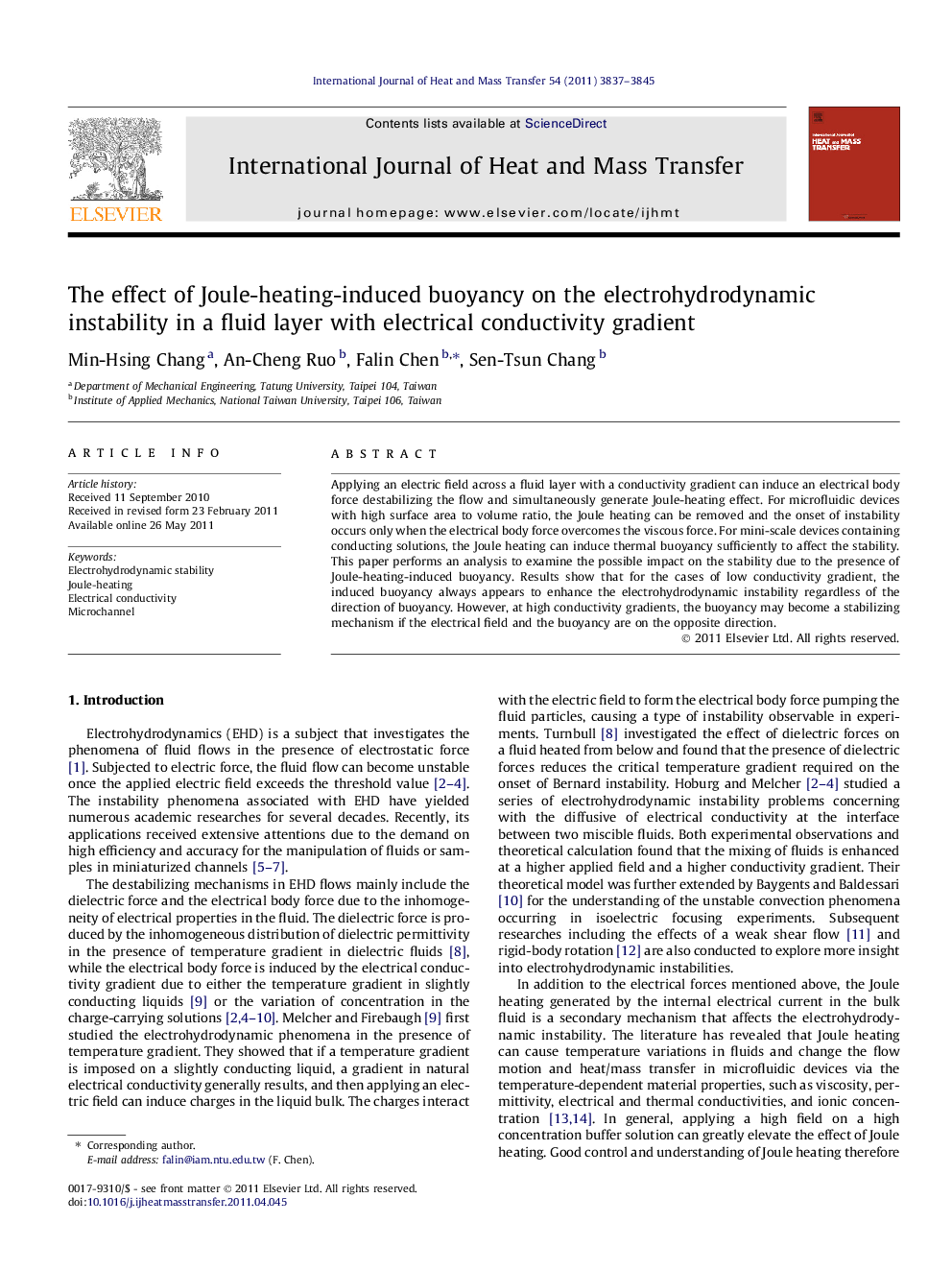| Article ID | Journal | Published Year | Pages | File Type |
|---|---|---|---|---|
| 659678 | International Journal of Heat and Mass Transfer | 2011 | 9 Pages |
Applying an electric field across a fluid layer with a conductivity gradient can induce an electrical body force destabilizing the flow and simultaneously generate Joule-heating effect. For microfluidic devices with high surface area to volume ratio, the Joule heating can be removed and the onset of instability occurs only when the electrical body force overcomes the viscous force. For mini-scale devices containing conducting solutions, the Joule heating can induce thermal buoyancy sufficiently to affect the stability. This paper performs an analysis to examine the possible impact on the stability due to the presence of Joule-heating-induced buoyancy. Results show that for the cases of low conductivity gradient, the induced buoyancy always appears to enhance the electrohydrodynamic instability regardless of the direction of buoyancy. However, at high conductivity gradients, the buoyancy may become a stabilizing mechanism if the electrical field and the buoyancy are on the opposite direction.
